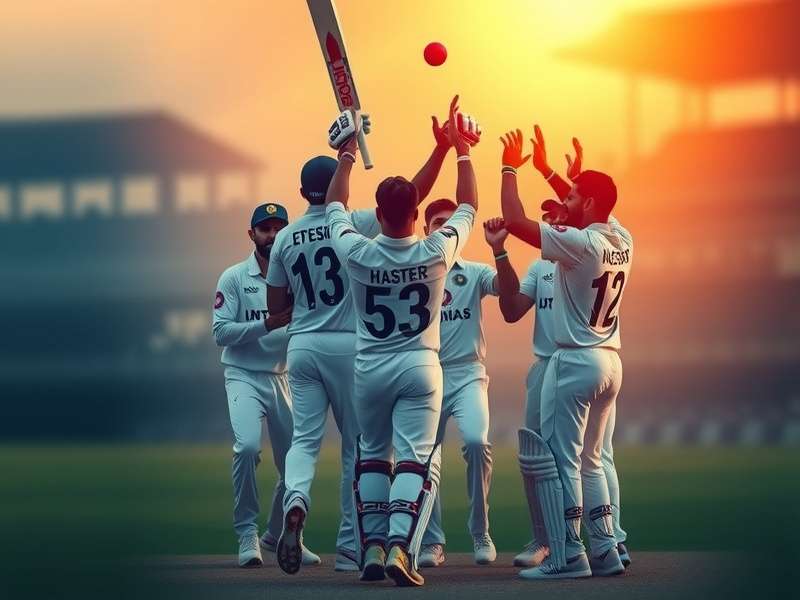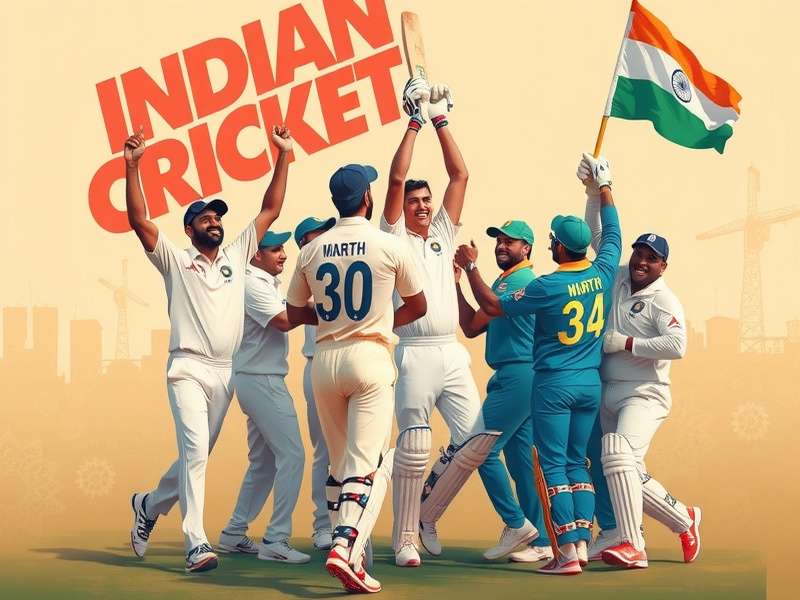Overview of Indian Cricket Icon
Cricket in India is not merely a sport; it is a religion that unites billions. TheIndian Cricket Iconrepresents more than just exceptional athletic talent—it embodies national pride, cultural identity, and the aspirations of a nation. From the early days of test cricket to the modern T20 era, Indian cricketers have consistently demonstrated skill, resilience, and sportsmanship on the global stage.
The journey of Indian cricket began in the colonial era, but it has evolved into a powerful force that dominates international cricket today. TheIndian Cricket Iconphenomenon encompasses legendary players, historic matches, record-breaking performances, and the emotional connection that Indians share with this beautiful game.

What makes theIndian Cricket Icontruly special is its ability to transcend boundaries—both geographical and social. Cricket icons in India come from diverse backgrounds, representing the unity in diversity that defines the nation. Their stories inspire millions of young Indians to pursue their dreams with passion and determination.
Did You Know?
India has produced more than 300 international cricketers who have represented the country in test matches, with many achieving iconic status both nationally and internationally.
Historical Evolution
The history of Indian cricket is a fascinating narrative of perseverance, growth, and eventual dominance. India played its first test match in 1932 against England at Lord's, marking the beginning of a journey that would eventually produce numerousIndian Cricket Iconfigures.
In the early years, Indian cricket struggled to find its footing on the international stage. The team lacked consistency and often depended on individual brilliance rather than collective strength. However, the 1970s marked a turning point with the emergence of players who would later become legendaryIndian Cricket Iconpersonalities.
The 1983 Cricket World Cup victory under Kapil Dev's captaincy was a watershed moment that transformed cricket's popularity in India. This historic win created a new generation of cricket enthusiasts and established cricket as India's premier sport. The triumph also paved the way for the commercial success that would follow in subsequent decades.

Key Historical Milestones
The establishment of the Indian Premier League (IPL) in 2008 revolutionized cricket globally and created a platform where international stars and domestic talent could showcase their skills. This tournament further elevated the status of theIndian Cricket Icon, providing financial security and unprecedented visibility to players.
Legendary Indian Cricket Icons
India has produced numerous cricketing legends who have left an indelible mark on the sport. TheseIndian Cricket Iconfigures have not only achieved remarkable statistical milestones but have also inspired generations with their character, leadership, and dedication to the game.
Batting Maestros
Sachin Tendulkar, widely regarded as the "God of Cricket," epitomizes theIndian Cricket Icon. With 100 international centuries and numerous records, his career spanned 24 years, during which he became the embodiment of cricketing excellence. His technical perfection, humility, and consistency made him a global sporting icon.
Sunil Gavaskar, the original "Little Master," revolutionized batting technique against fast bowling. His fearless approach against the formidable West Indian pace attack of the 1970s established new standards for opening batsmen. Rahul Dravid, known as "The Wall," exemplified resilience and technique, while Virender Sehwag redefined aggressive batting in test cricket.
Record Alert
Sachin Tendulkar holds the record for the most runs in both test cricket (15,921) and ODIs (18,426), making him the highest run-scorer in international cricket history.
Bowling Wizards
Anil Kumble, India's highest wicket-taker in test cricket, demonstrated that accuracy and variation could be as lethal as raw pace. His 10-wicket haul against Pakistan in 1999 remains one of the most remarkable achievements in cricket history. Kapil Dev, with his charismatic leadership and brilliant all-round abilities, inspired India's first World Cup triumph.
In the spin department, Bishan Singh Bedi's classical left-arm orthodox bowling represented the golden era of Indian spin. Harbhajan Singh's off-spin revolutionized the art, particularly with his mastery of the "doosra." In the pace department, Javagal Srinath and Zaheer Khan brought new dimensions to Indian fast bowling with their skill and intelligence.

Modern Era Icons
Virat Kohli has redefined fitness standards and batting consistency in modern cricket. His aggressive captaincy and unparalleled chasing abilities have established him as a contemporaryIndian Cricket Icon. Mahendra Singh Dhoni's calm leadership, innovative captaincy, and finishing abilities revolutionized limited-overs cricket, making him one of the most successful captains in history.
Rohit Sharma's elegant batting and record-breaking three double centuries in ODIs have cemented his place among batting greats. Ravichandran Ashwin's cerebral approach to spin bowling has made him one of the most successful bowlers in test cricket history. Jasprit Bumrah's unorthodox action and lethal yorkers have established him as a world-class fast bowler.
Record-Breaking Achievements
TheIndian Cricket Iconis defined not just by skill and popularity but by remarkable statistical achievements that have rewritten record books. Indian cricketers hold numerous world records across all formats of the game, demonstrating their dominance in the international arena.
Batting Records
Indian batsmen have consistently pushed the boundaries of what is possible in cricket. Sachin Tendulkar's records include most runs, most centuries, and most appearances in international cricket. Virat Kohli holds the record for fastest to 8,000, 9,000, 10,000, and 11,000 runs in ODIs, showcasing his remarkable consistency.
Rohit Sharma's monumental 264 against Sri Lanka remains the highest individual score in ODIs. His three double centuries in the 50-over format is a record that highlights his extraordinary batting prowess. In test cricket, Rahul Dravid's 36,200 balls faced is testament to his incredible concentration and endurance.
Test Cricket Records
- Most RunsSachin Tendulkar
- Most CenturiesSachin Tendulkar
- Most WicketsAnil Kumble
- Most Catches (Fielder)Rahul Dravid
ODI Records
- Most RunsSachin Tendulkar
- Most CenturiesVirat Kohli
- Highest ScoreRohit Sharma
- Most WicketsAnil Kumble
Bowling and Fielding Records
Anil Kumble's 619 test wickets make him India's most successful bowler and the fourth-highest wicket-taker in test history. His 10-wicket haul in an innings is a feat matched by only one other bowler in test cricket history. Kapil Dev held the world record for most test wickets (434) before it was broken by Courtney Walsh.
In the fielding department, Mohammad Azharuddin revolutionized slip catching with his spectacular reflexes. Rahul Dravid's 210 test catches remain a world record for non-wicketkeepers, highlighting his exceptional skills in the slip cordon. Mahendra Singh Dhoni's lightning-fast stumpings revolutionized wicketkeeping in limited-overs cricket.
Statistical Marvel
Virat Kohli holds the record for the fastest to 12,000 runs in ODIs, achieving this milestone in just 242 innings, significantly faster than second-placed Sachin Tendulkar who took 300 innings.
Evolution of Indian Cricket Icon
The concept of theIndian Cricket Iconhas evolved significantly over the decades, reflecting changes in society, media, and the game itself. From the gentlemanly figures of the early era to the global superstars of today, each generation has redefined what it means to be a cricketing icon in India.
The Gentleman Era (Pre-1970s)
In the early years, Indian cricketers were largely from privileged backgrounds and played the game as amateurs. Figures like C.K. Nayudu, India's first test captain, and Vijay Merchant represented the gentlemanly spirit of cricket. Their achievements were celebrated, but they lacked the mass appeal and commercial opportunities available to modern players.
During this period, cricket was primarily an urban sport with limited reach beyond major cities. TheIndian Cricket Iconwas respected but not yet a national phenomenon. Media coverage was minimal, and players maintained a low profile off the field.
The National Heroes Era (1970s-1990s)
The 1970s marked the beginning of cricket's transformation into a national obsession. The emergence of players like Sunil Gavaskar, Gundappa Viswanath, and Kapil Dev coincided with increased television coverage and growing national pride. The 1983 World Cup victory catalyzed this transformation, creating the first truly nationalIndian Cricket Iconfigures.
During this era, cricketers began to enjoy celebrity status beyond the sporting arena. Endorsement deals became more common, and players started appearing in advertisements and television shows. The BCCI's growing financial power enabled better facilities and compensation for players.

The Global Superstar Era (2000s-Present)
The 21st century witnessed the transformation of Indian cricketers into global superstars. Sachin Tendulkar's unprecedented success, combined with India's economic liberalization and media explosion, created the perfect environment for the modernIndian Cricket Icon. Players became brand ambassadors for multinational corporations and household names across the cricket-playing world.
The establishment of the IPL in 2008 revolutionized the financial landscape of Indian cricket. Young players could now aspire to million-dollar contracts, while established stars became entrepreneurs and influencers. Social media further amplified their reach, allowing direct connection with fans worldwide.
Today'sIndian Cricket Iconis not just an athlete but a cultural phenomenon. They influence fashion, lifestyle, and social conversations. Their impact extends beyond cricket, with many players engaging in philanthropy, business ventures, and social activism. The modern Indian cricketer is a global citizen with unprecedented opportunities and responsibilities.
Global Impact
Indian cricketers are among the most followed athletes on social media globally, with Virat Kohli and MS Dhoni consistently ranking among the world's most influential sports personalities.
Cultural Impact and Legacy
TheIndian Cricket Iconhas transcended sports to become an integral part of India's cultural fabric. Cricket matches involving the Indian team can bring the nation to a standstill, with streets emptying during crucial encounters. The emotional investment of fans in the fortunes of their cricketing heroes is unparalleled in world sports.
Cricket has become a unifying force in a diverse nation, cutting across regional, linguistic, and religious differences. The success of Indian cricketers has inspired countless children from small towns and villages to pursue their dreams. The stories of players like MS Dhoni, who emerged from the cricketing backwaters of Ranchi to become a world champion, have become modern folklore.
The commercial impact of theIndian Cricket Iconis equally significant. Cricket-related advertising dominates Indian media, with players endorsing everything from consumer goods to financial services. The IPL has created a multi-billion dollar ecosystem that generates employment and economic activity across multiple sectors.
Indian cricketers have also made their mark in philanthropy and social causes. Several players have established foundations to support education, healthcare, and sports development in underprivileged communities. Their influence extends to environmental awareness, with initiatives promoting sustainability and conservation.
The Future of Indian Cricket Icon
As Indian cricket continues to evolve, the concept of theIndian Cricket Iconwill also transform. The next generation of players will operate in an increasingly globalized and digital world, with new challenges and opportunities. Women's cricket is gaining prominence, with players like Mithali Raj and Harmanpreet Kaur achieving iconic status and inspiring a new generation of female cricketers.
The future will likely see greater specialization, with players focusing on specific formats. The traditional boundaries between international and domestic cricket may blur further, with franchise leagues gaining importance. However, the fundamental qualities that define anIndian Cricket Icon—skill, character, and the ability to inspire—will remain constant.
Indian cricket's administration faces the challenge of balancing commercial interests with the development of the game. The continued success of theIndian Cricket Iconphenomenon depends on nurturing talent at the grassroots, maintaining the integrity of the sport, and adapting to changing audience preferences in the digital age.